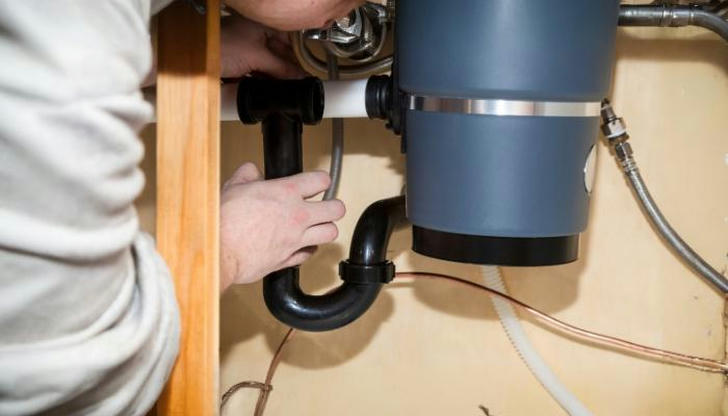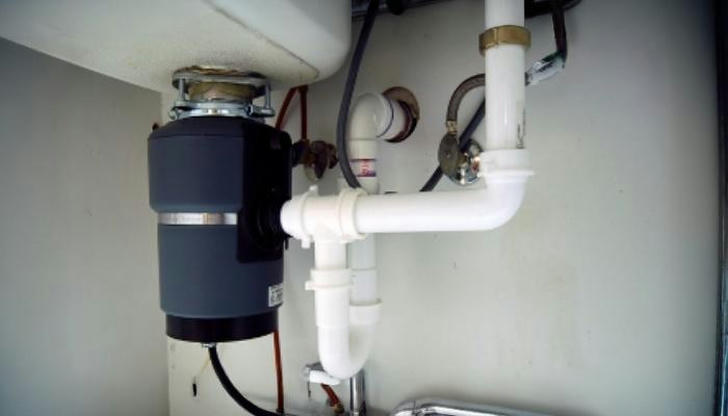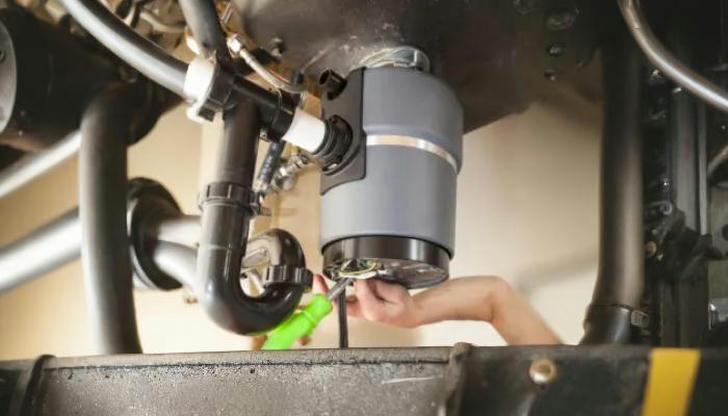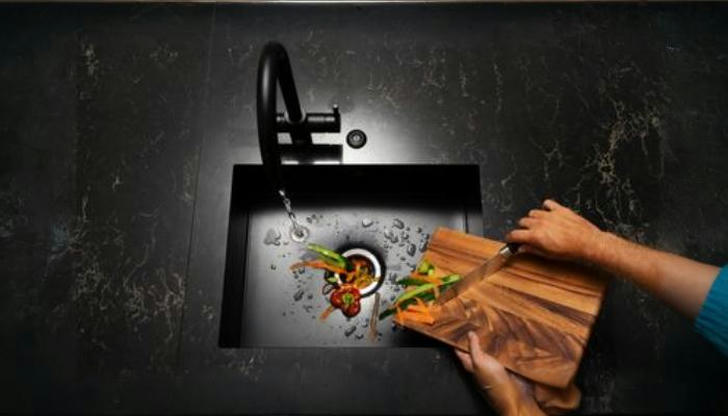When to Replace Garbage Disposal & How Much Does It Cost

A garbage disposal, also known as a garbage disposer, waste disposal unit, or garburator, is a device installed under a kitchen sink between the sink's drain and the trap that shreds food waste into small pieces to allow it to pass through the plumbing.
It is typically electrically powered and is designed to grind food waste into small particles that can easily flow through the plumbing system. Garbage disposals help reduce the amount of food waste that goes into landfills and can also help prevent clogs in kitchen drains.
If your garbage disposal fails, you have options for troubleshooting and repair. However, if simple fixes don't solve the issue, replacing the unit might be necessary. Generally, replacing a garbage disposal can range from $150 to $950, with an average cost of around $450. However, actual costs can differ based on several factors. Refer to this guide for a clearer insight into the expenses associated with garbage disposal replacement.

When to Replace a Garbage Disposal
Many problems that arise with your garbage disposal don't necessarily require replacing the entire unit. In fact, most garbage disposals can last 5 to 10 years before nearing the end of its life. Thus, it's advisable to attempt repairs before opting for a full unit replacement.
If there are any of the following signs, then you may consider replacing your garbage disposal.
• Slow drainage
A sink draining slowly might indicate an early sign for garbage disposal replacement. Isolated drainage issues aren't typically concerning, but persistent problems require attention.
If water remains slow to drain even after activating the garbage disposal, you should first check for plumbing blockages. Explore effective methods for unclogging your kitchen sink, such as using a plunger or plumber's snake.
After attempting to clear the drain without success, lingering slow drainage could suggest mechanical issues or a buildup of debris in the disposal unit.
• Leaking water
The presence of water leaking from the unit is one way how to tell if a garbage disposal is broken. These units rely on seals, flanges, gaskets, and similar components to maintain a watertight seal, which can degrade over time due to warping, cracking, loss of adhesion, or other defects.
To confirm the source of the leak, inspect beneath the sink using a flashlight, ensuring it originates from the garbage disposal and not elsewhere, like a pipe or joint. Immediate attention is necessary if your garbage disposal is leaking, as it can lead to mold, rust, and damage to surrounding materials.
While it's possible to repair a garbage disposal leak, replacing the unit often proves more cost-effective in the long run.
• Persistent odors
Persistent odors emanating from your sink's drain could indicate a buildup of trapped food particles, bacteria, and mold within your garbage disposal. While these particles may not cause significant drainage issues, they can create unpleasant smells over time.
Temporary relief can be achieved with cleaning solutions, and professional cleaning services can manually clean the garbage disposal. However, if the buildup is extensive enough to cause noticeable odors, it's often a sign that it's time to invest in a new garbage disposal unit.
• Unusual noises
If you notice an unusual noise coming from your garbage disposal, it's important not to ignore it.
Inspect the drain with a flashlight to identify any foreign objects, and if you find any, use caution when removing them. If there are no foreign objects present, the noise is likely due to a mechanical issue with the unit itself. Depending on the age of the disposal, replacing it may be the most practical solution.

Garbage Disposal Replacement Cost
Doing the garbage disposal replacement yourself can cut down labor expenses by $100 to $400. However, unless you possess extensive plumbing skills, hiring a professional plumber is typically the safest bet. The total cost, including disposal and labor, varies based on factors like disposal type, material, and motor size.
There are two main types of garbage disposals: continuous feed and batch feed. Continuous feed units, controlled by a wall-mounted switch, run continuously when switched on, costing around $200 on average. Batch feed disposals, which require a stopper before activating, offer added safety and average around $300. While continuous feed models are cheaper upfront, installation expenses may be higher if wiring work is necessary. On the other hand, batch feed units may have a higher initial cost but lower installation fees.
Garbage disposals made of aluminum, the most common material, range from $75 to $300. Stainless steel options are pricier but more durable, priced between $400 to $1,100. For motor size, a ⅓ or ½-horsepower (HP) motor, suitable for smaller households, costs $50 to $225. Larger households with five or six members may require a more potent 1 HP disposal, priced from $200 to $400.
Additional Costs
In addition to the typical garbage disposal replacement expenses, there are other costs to consider, such as electrical wiring installation, removal and disposal of the old unit, warranties, and brand costs. Electricians typically charge between $120 to $165 to install a grounded outlet for the new disposal. Additionally, removal and disposal of the old unit can add an extra $50 to $100 to the total cost.

Tips for Keeping Garbage Disposal In Good Condition
The garbage disposal is a vital kitchen appliance that sees frequent use. To maintain its optimal performance, here are a few tips:
• Use ice cubes to loosen food particles stuck to the blades. Ice cubes infused with lemon juice or vinegar can enhance the cleaning effect.
• Enhance the disposal's odor by grinding frozen citrus peels. Simply run the disposal for about 30 seconds with the peels in it, then flush with hot water for an additional 15 seconds.
• Avoid putting meat, bones, starchy foods, shells, nuts, grease, oil, cooking fat, coffee grounds, and fibrous vegetables such as kale. These can cause damage to the disposal and the plumbing system.
